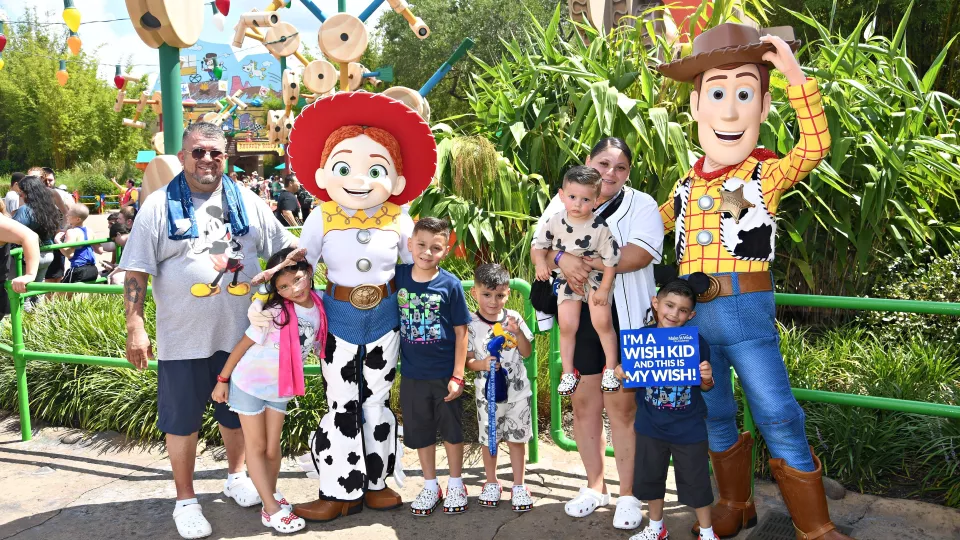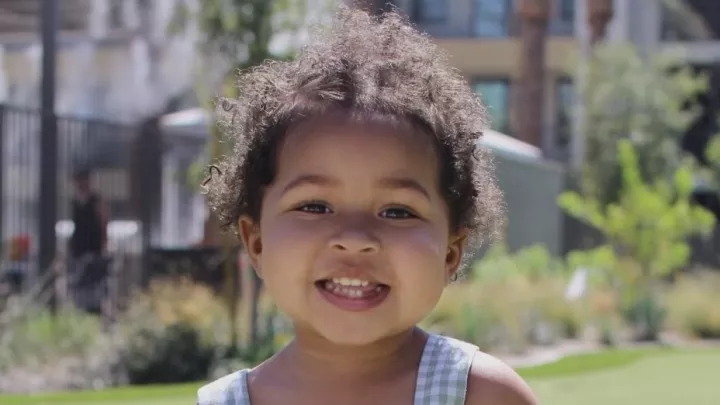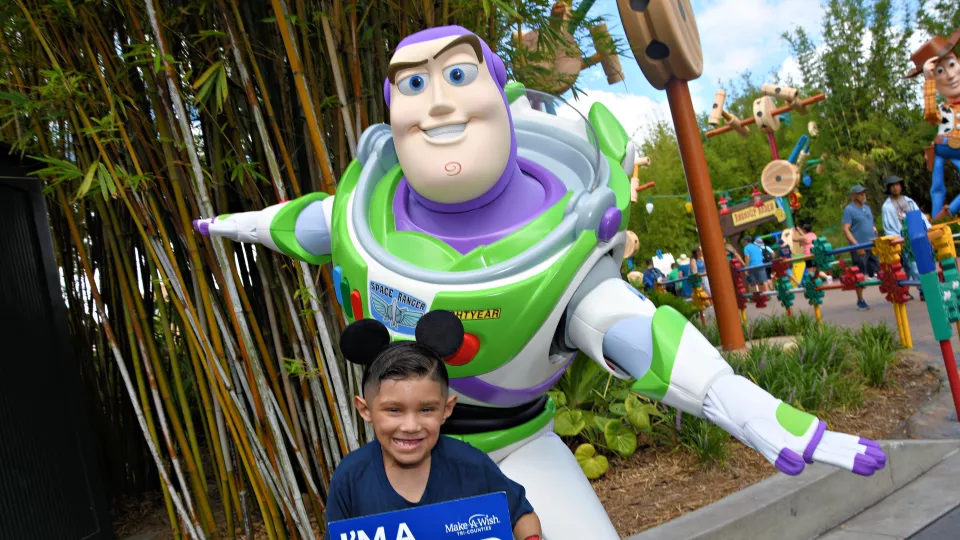
Nano's Next Chapter
Meeting new classmates at school.
A pickup game of soccer.
Quality time with a furry friend.
And, hopefully, tracking down Iron Man at Disney World.
For much of 10-year-old Adriano’s (“Nano’s”) life, these types of activities were out of the question.
Born with a rare genetic condition called Fanconi anemia which affects bone marrow’s ability to create healthy blood cells, Nano spent his early childhood enduring countless hospital visits, tests and procedures, including a highly specialized bone marrow transplant and a year-long inpatient stay.
Finally, in November 2020, Nano and his mom, Eliana, rang the bell in the Patricia and John Merrill Bone Marrow Transplant Unit, signaling his discharge home and kickstarting a new phase of Nano’s health journey.
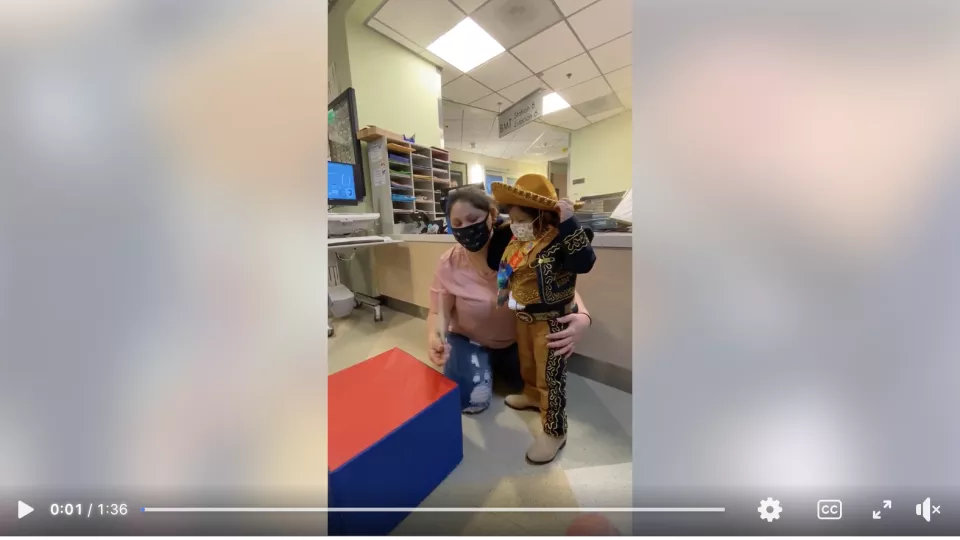
That journey hasn’t been picture-perfect; For the past four years, Nano’s fragile immune system necessitated dozens of outpatient visits and required him to sit out many activities like playing sports, traveling and going to school.
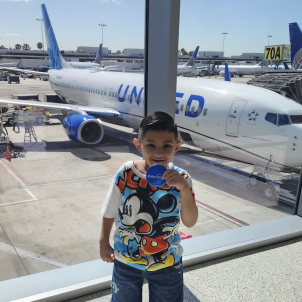
But this year, Nano enters the next chapter of his childhood: His immune system is healthy, he’s playing soccer and baseball with his brothers, and he has the green light from his doctors to attend in-person school for the first time. Most recently, he experienced his first rides on an airplane and a roller coaster in the same week.
“It has been a long journey,” says Eliana, who left her job in 2019 to care for Nano full-time and lived with him in the hospital. “Now when he gets a vaccine or blood draw, I tell him, ‘This is nothing!’ He’s overcome so much worse.”
A medical odyssey
At 4 years old, Nano spent more than a year in the Bone Marrow Transplant (BMT) Unit of CHLA’s Cancer and Blood Disease Institute.
“You went in being 4, you came out being 6 ½!” Eliana tells Nano.
Nano received a highly specialized, “mismatched” bone marrow transplant called an umbilical cord blood transplant. The gold standard for bone marrow transplantation involves a “fully matched” sibling donor—someone who matches the recipient at 10-out-of-10 human leukocyte antigens (HLA) which are the markers doctors use to match recipients and donors. Finding a 10-out-of-10 match is easier said than done, though.
Because HLAs are inherited, even when a transplant candidate has siblings, each sibling has only a 25% chance of being a full match. Additionally, many transplant candidates cannot find a fully matched donor in the National Marrow Donor Registry. For people with non-Caucasian heritage, the search is even more difficult: People of Hispanic or Latino, Asian or Pacific Islander and Black or African American descent will have only a 29-48% chance of finding a fully matched registry donor.
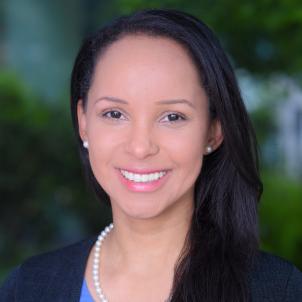
“In L.A., our patients come from so many different ethnic backgrounds, adding to the beauty of this city,” explains Paibel Aguayo-Hiraldo, MD, Medical Director of Transplantation and Cellular Therapy at CHLA and part of Nano’s long-term care team, “But most of them will not have a matched sibling donor or donor in the registry.”
Cord blood transplants, however, allow more flexibility. These “mismatched” transplants use the stem cells in donated umbilical cord blood and require fewer matching HLA proteins—usually four or five out of six. This was the best option for Nano, and an increasing number of the world’s population.
To Dr. Paibel Aguayo-Hiraldo (known as “Dr. Paibel” to her patients and almost everyone else at CHLA), CHLA’s location in one of the most ethnically diverse cities in the world requires building a fully trained team able to provide a wide array of advanced treatments like cord blood transplants.
“At CHLA, we have learned how to do every type of transplant using every source of stem cells and mismatch for patients who cannot find a donor,” she says. “We have conducted more than 2,000 transplants and cellular therapies since we were first established. We consistently perform more than 50% of all pediatric bone marrow transplants in Southern California.”
The transplant was a success—but Nano experienced several other complications that kept him in inpatient care, including a painful gastrological and skin condition known as Graft versus host disease.
Amidst these incredible challenges, Nano’s positivity made a lasting impression on his care team. “He was always smiling,” Dr. Paibel shares. “He could be super sick and he'd still say, ‘Dr. Paibel, give me a hug!’ Every day was new for him, no matter how ill he could have been the day before.”
The healing power of music
In the BMT Unit, Nano is well known for his love of performing—especially mariachi music.
During his long inpatient stay, he’d put on concerts for his care team and fellow patients. Donning a tiny, custom-made mariachi suit, Nano delivered passionate renditions of hits from the Disney movie “Coco” and Mexican folk classics like “Cielito Lindo.”
For the Ortiz family, “Cielito Lindo” (lyrics in the chorus translating to “sing, and don’t cry”) has served as a consistent source of comfort in good times and in hard times. Eliana sang it to Nano and his siblings to comfort them as babies. Then, Nano sang it endlessly during his hospital stay and even wrote the lyrics onto a pair of cleats for Major League Baseball star Justin Turner.
Years later, the song still holds the same joyful power: “He was singing it the whole drive to his appointment today,” says Eliana. “It’s like his anthem!”
Call the paparazzi!
To Nano and Eliana, that momentous day, ringing the bell at CHLA in 2020, is a memory that’s been hard to top.
For one, a full mariachi band joined the crowd for Nano’s sendoff.
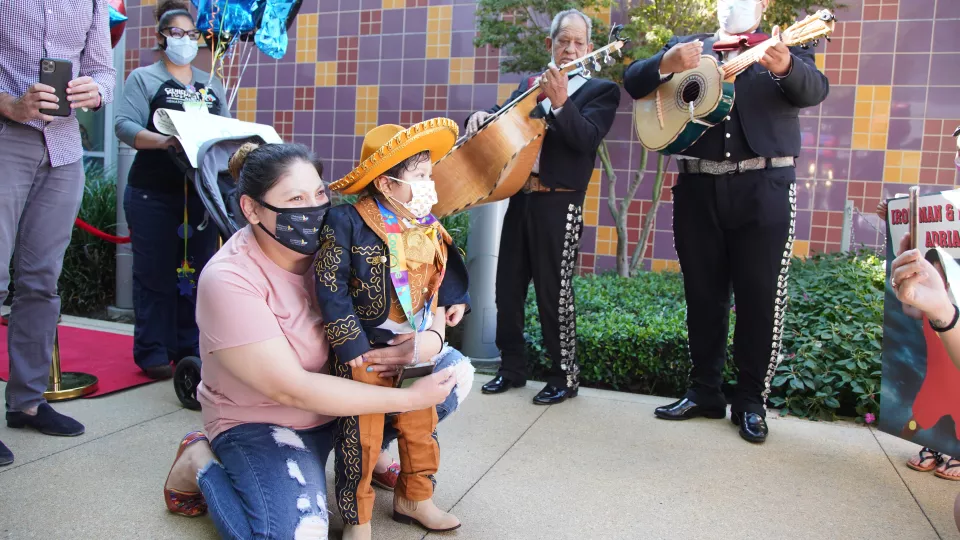
Nano recalls how special it was to see so many people he loved cheering him on. First, his nurses, doctors and family members threw him a huge party on the BMT floor. Then, outside in the CHLA courtyard, an even bigger crowd was waiting for him: His very own “paparazzi” (the CHLA media team), the mariachi band, and even Iron Man, who symbolized strength and inspiration throughout Nano’s recovery.
“That is my best memory,” says Nano. “Everybody was there to support me.”
For Eliana, their departure signaled their ability to spend time as a family unit again. “It’s something we’ll never forget,” Eliana shares. “After so many years, we all got to be together.”
A long recovery
After a bone marrow transplant recipient is discharged from the hospital, recovery is incredibly sensitive, Dr. Paibel explains. She often tells her patients their lives will change for at least a year. For Nano, complications stretched recovery out even longer.
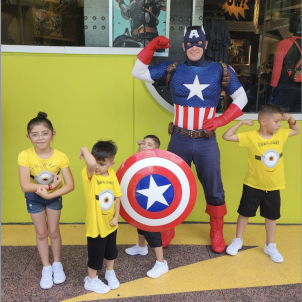
“Once you’re out of the hospital, in terms of vulnerability, it’s like having a newborn baby,” says Dr. Paibel. “Your body forgets all the vaccinations you received previously. Your brand-new immune system does not know how to fight infections. It’s easy to get very sick.”
Nano’s “newborn” immune system required that he avoid activities and encounters that might lead to illness, like in-person school. For a few years, that also meant skipping interactions with some of CHLA’s most beloved team members: therapy dogs.
“Bone Marrow Transplant is one of the only units in the hospital where they don’t get visits from therapy dogs,” Dr. Paibel explains.
Today, Nano makes up for that “dog-less” time by stopping to pet as many furry friends as possible.
Multidisciplinary care sets Nano up for success
This past June, Nano reached another milestone: His immune system became stable enough that Dr. Paibel and team declared him a “graduate” of the outpatient Bone Marrow Transplant Unit.
On hearing the news, nurses and clinicians from throughout Nano’s journey stopped by to celebrate. “Everybody was so happy,” shares Dr. Paibel, “We called each other to say, ‘Nano is graduating today!’”
While this milestone was overwhelmingly positive for Nano and Eliana, it also felt bittersweet: “It hit him once we left clinic,” says Eliana. “He's like: ‘Wait, I'm done?’”
“He got so attached to the nurses, nurse practitioners and doctors, and he just couldn’t believe that he’s not going to see them anymore,” Eliana explains. “I'm like: ‘You'll still come here! You can visit the other side of the clinic. You just don't need to see them as your doctors.’”
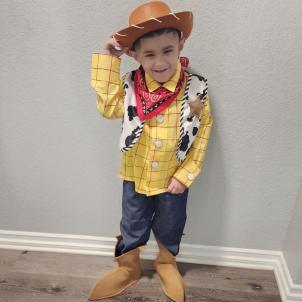
Today, Nano’s outpatient visit days to CHLA are still quite full: He must meet with Dermatology, Nephrology, Pulmonology and Gastroenterology. Long-term multispecialty care for Nano’s Fanconi anemia is essential, as it affects many organs.
“This level of specialty expertise is critical, but so is our focus on human nature,” shares Dr. Paibel. “Each patient becomes family. When Nano visits, he’ll first tell me what he's doing with his baby sister … and then we'll talk about medicine.”
To his CHLA care team, Nano shares this message: “Thank you for taking care of me and being kind to me and helping me. You’re awesome.”
New priorities
For so many years, Nano’s number one priority had to be recovery. Four years after his discharge from the hospital, he has a new directive from his care team: Just be a kid.
When asked what aspect of in-person school he’s most excited about, Nano expresses how much he looks forward to making new friends. He plans to tell them about the long journey he’s been on to get there and share his love of sports, superheroes and song.
Before Nano heads to school this fall, his family embarked on yet another milestone: their first trip since Nano was born.
Eliana, her husband Marco and five brothers and sisters all headed to Disney World via Make-A-Wish. Along with trying to “ride every single ride,” Nano most enjoyed meeting up with his favorite superheroes, including Buzz Lightyear, Iron Man and Captain America. “They’re strong and I’m strong,” he says.
“I feel like after this storm, after so much that has happened, we finally get to have some peace together and just have fun as a family,” shares Eliana.
